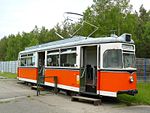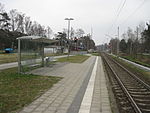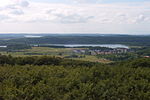Prora

The Colossus of Prora, commonly known as simply "Prora", is a building complex in the municipality of Binz on the island of Rügen, Germany. It was built by Nazi Germany between 1936 and 1939 as part of the Strength Through Joy (Kraft durch Freude or KdF) project. It consisted of eight identical buildings and was 4.5 km (2.8 mi) in length parallel to the beach, with the surviving structures stretching 3.0 km (1.9 mi). Although the buildings were planned as a holiday resort, construction was not completed and they were not used for this purpose. Prora, as it was known, was however used largely by the Nazi Party for propaganda, with the supposed strength and power displayed in the construction effort of the complex likened by the party to that of themselves. After World War II, the complex found various military uses, first by the Soviet Army, then by the East German Volksarmee, and then by the German Bundeswehr. Today it houses a large youth hostel, a hotel and holiday apartments. The complex has a formal heritage listing as a particularly striking example of Nazi architecture.
Excerpt from the Wikipedia article Prora (License: CC BY-SA 3.0, Authors, Images).Prora
59,
Geographical coordinates (GPS) Address Nearby Places Show on map
Geographical coordinates (GPS)
| Latitude | Longitude |
|---|---|
| N 54.439166666667 ° | E 13.575555555556 ° |
Address
59
18609
Mecklenburg-Vorpommern, Germany
Open on Google Maps









